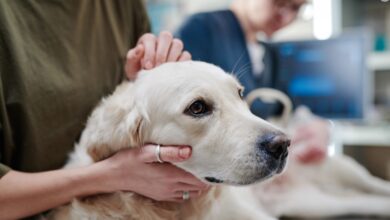The Impact of Classroom Pets on Student Well-being and Learning
Classroom pets can have a growing impact on education showing how animals support emotional and academic development.
Pets have proven to be valuable companions and lessons in therapy dogs and cats, and even smaller animals like rabbits and guinea pigs. They serve a purpose beyond just companionship.

________________________________________
1. Why Pets Belong in Classrooms
The Impact of classroom pets is also seen in how they build empathy and responsibility, shaping key life skills beyond the academic setting. As well for students who battle anxiety, learning differences, or even behavioral challenges, the presence of an animal can be comforting and can ease social interactions. This is why pets are rapidly becoming commonplace in classrooms throughout the nation.
________________________________________
2. Pets Assist in Reducing Anxiety and Stress
The back-to-school hustle is practically a universal struggle, but it’s one that doesn’t just end the moment the first day wraps up. Academically and socially, school can be a lot to manage for young students. Many educators emphasize the impact of classroom pets giving empathy and reassurance without judgment.
Walking pets, for instance, are extraordinary for helping children cope with anxiety as they are easy to love and are nonjudgmental during stressful situations. Animals reduce blood pressure and have been linked to lower heart rate among interacting individuals such as by simply sitting with them.
3. Students Become More Engaged with Pets
A German teacher in a third-grade class noticed improved attitudes among pupils as a result of weekly pet-therapy sessions, where she brought her dog once a week. Such engagement further proves the impact of classroom pets in motivating students and building enthusiasm toward school tasks. Her pupils, who were part of an experimental group with a pet, demonstrated markedly improved school attitudes when compared with a control group without a pet.
“School dogs”
have even been allocated more engaging roles within classrooms, such as selecting math problems, or cheerleaders for test takers – participants in more active class roles. Beyond motivation, pets foster an engaging and fun atmosphere that enhances learning.
________________________________________
4. Pets Enrich Learning Experiences
For a considerable number of learners, working with animals improves understanding. Constructing a turtle habitat while learning about thermoregulation or designing a bearded dragon’s track to measure its movement transforms. A key example of the impact of classroom pets is their role in turning passive learning into active discovery.
A study conducted in 19 schools across 41 classrooms in the United States shows that pets, from guinea pigs to turtles, enhance engagement toward academic activities and reading.
National Read with Me™ Pet Partners™ programs foster literacy by motivating students to vocalize stories to therapy animals such as dogs, pigs, cats, and llamas. These nonjudgmental listeners provide a bolstering reading environment to help build reading confidence.
Other reading programs include:
• R.E.A.D.™ Salt Lake City, UT
• Reading with Rover Woodinville, WA
• Read to the Dogs Portland, OR
• Read With a Therapy Dog Brooklyn, NY
• Read to a Dog Sonoma County, CA
Many of these programs welcome therapy animal teams—consider getting involved if you have a suitable pet.
_______________________________________
5. Pets Aid the Development of Social Skills and Build the Community
Not all children find it easy to make friends. Their impact of classroom pets promotes social interaction and encourage shared responsibilities such as feeding, grooming, and walking, which helps students work together, increasing self- esteem and forming better peer relationships.
6. Guidelines on How to Incorporate Classroom Pets
Did you know that a teacher might appreciate the idea of a classroom pet? Pets in the Classroom offers grants to support this initiative.
You can “use the ‘Tell a teacher ‘Tool” to submit a recommendation. Simply fill in the teacher’s contact details, and the information will be sent straight to them.
__________________________________________________________________
Conclusively,
The benefits of having pets in classrooms extend far beyond entertainment. These benefits highlight the impact of classroom pets on reducing stress and improving readiness to learn, improving social interaction, and fostering emotional health. By introducing animals into educational settings, teachers are fostering inclusivity and compassion by creating more positive and nurturing environments that allow all students to thrive in.
__________________________________________________________________
Final Thoughts on the Powerful Impact of Classroom Pets
1. How the Impact of Classroom Pets Enhances Emotional and Academic Growth
The impact of classroom pets on students extends far beyond simple companionship; it’s a deeply rooted factor in fostering both emotional resilience and academic enthusiasm. Pets, whether dogs, cats, rabbits, or turtles, offer comfort and structure to students—especially those experiencing anxiety, behavioral struggles, or learning difficulties. With their calm, nonjudgmental presence, animals can ease daily classroom tension and create a welcoming learning environment where every child feels valued.
Several classroom studies and national literacy programs, such as Read with Me™ and Reading with Rover, have proven that reading to animals improves fluency, boosts confidence, and fosters a safe space for expression. At the same time, pets contribute to building key life skills like empathy and responsibility. Tasks like grooming or feeding a pet are often shared among students, strengthening social bonds and promoting teamwork.
Research conducted in multiple schools confirms the impact of classroom pets as a motivator for better attendance, improved classroom behavior, and increased participation. Children often become more excited about learning when pets are involved in lessons—whether it’s tracking a bearded dragon’s movement in science class or designing a turtle habitat during environmental studies.
In short, animals bring the curriculum to life. They shift learning from passive listening to active exploration, making subjects more relatable and tangible. By integrating pets into the school day, educators cultivate a classroom culture rooted in compassion, responsibility, and active learning—all essential elements for holistic child development.
2. Why Educators Are Embracing the Impact of Classroom Pets
Across the nation, teachers are recognizing the transformative impact of classroom pets and actively incorporating them into educational strategies. The presence of animals helps reduce stress and blood pressure, allowing children to relax and focus more effectively. For many students, especially those with social or emotional challenges, the classroom pet serves as a source of emotional support—someone they can trust without fear of judgment.
These animals do more than provide emotional stability; they enrich academic performance. Pets have been used in experimental classroom setups where students showed increased engagement and enthusiasm for subjects like math and reading. In one example, a teacher noticed significant improvement in student attitudes when a dog was present during lessons. Students in the experimental group participated more, collaborated better, and displayed higher morale than those in a pet-free control group.
Moreover, incorporating pets into lessons encourages hands-on learning. Whether constructing animal habitats or observing behavior patterns, students learn by doing, which boosts comprehension and retention. Programs like Pets in the Classroom also offer grants and resources for teachers who want to embrace these methods, making it easier to implement.

Ultimately, the impact of classroom pets reflects a shift in how we understand education—not just as the transmission of knowledge, but as a process of nurturing the whole child. Emotional safety, social development, and academic engagement all flourish when animals are part of the learning space. With thoughtful planning and support, pets can help transform classrooms into places of joy, connection, and discovery.
| Aspect | Impact of Classroom Pets |
|---|---|
| Improved Mental Health | Pets help reduce student anxiety and stress, offering emotional comfort and stability. |
| Enhanced Social Interaction | Classroom pets encourage teamwork and build friendships through shared responsibilities like feeding and grooming. |
| Increased Academic Motivation | Animals make learning more engaging, boosting student enthusiasm and class participation. |
| Stronger Reading Skills | Programs like Read With Me show how pets motivate children to read aloud with confidence. |
| Development of Life Skills | Caring for pets teaches responsibility, empathy, and routine—key traits for personal growth. |




